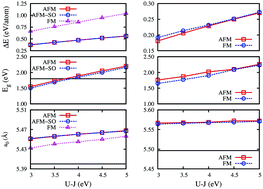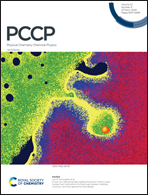Structural, thermodynamic, electronic and elastic properties of Th1−xUxO2 and Th1−xPuxO2 mixed oxides†
Abstract
The structural, thermodynamic, electronic, and elastic properties of Th1−xUxO2 and Th1−xPuxO2 mixed oxides (MOX) have been calculated with Hubbard corrected density functional theory (DFT+U) to account for the strong 5f electron correlations. The ideal solid solution is approximated by special quasi-random structures and the U-ramping method is used to account for the presence of metastable states in the self-consistent field solution of the DFT+U approach. The mixing enthalpy (ΔHmix) is positive throughout the composition range of the Th1−xUxO2 MOX, consistent with a simple miscibility gap (at low temperature) phase diagram. The behavior of the Th1−xPuxO2 MOX is more complex, where ΔHmix is positive in the ThO2-rich region and negative in the PuO2-rich region. Electronic structure analysis shows that substitution of Th by U/Pu in ThO2 leads to a reduction of the average Th–O bond lengths, causing distortion in the crystal structure. The distortion in the crystal structure results in an increase in the conduction bandwidth and a reduction of the band-gap in the MOX. Good agreement of our DFT+U calculated elastic properties of ThO2, UO2 and PuO2 compounds with experiments leads to convincing prediction of these properties for Th1−xUxO2 and Th1−xPuxO2 MOX.



 Please wait while we load your content...
Please wait while we load your content...